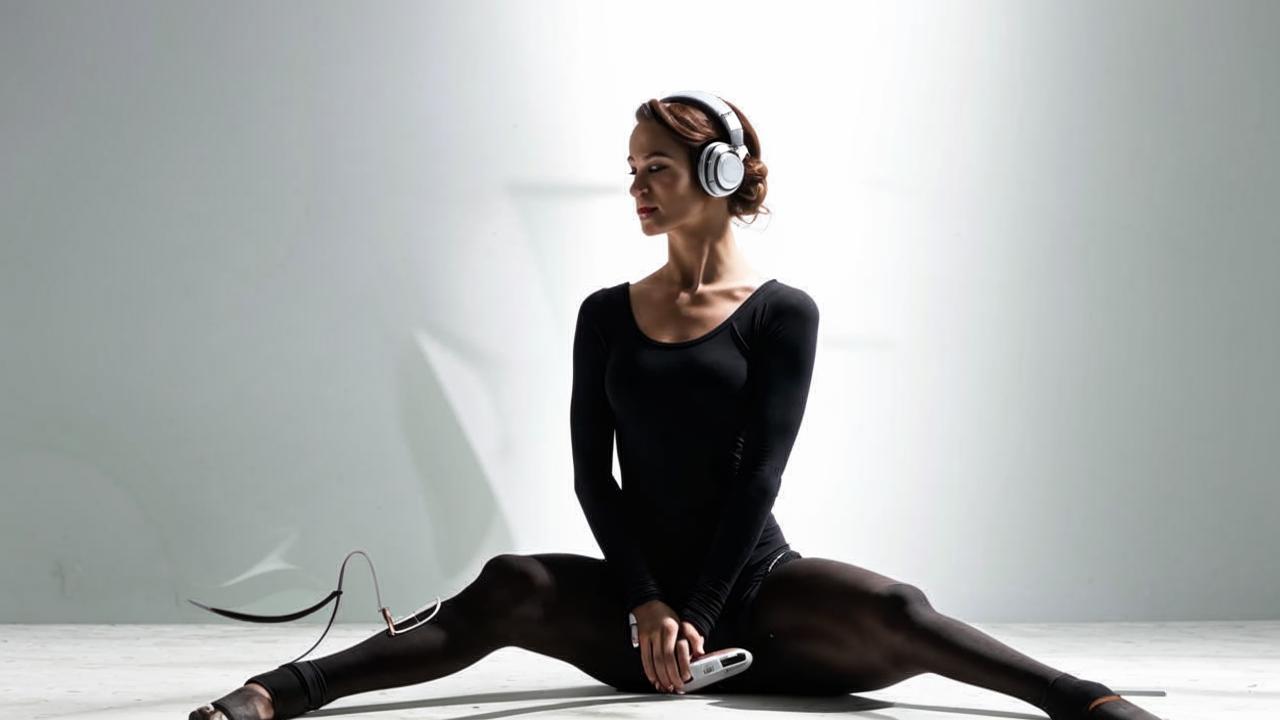Probably every athlete, coming to the gym for the first time, has thought about what exactly he wants to do. Whether it will be measured group classes for flexibility and body mobility or individual sessions with a fitness trainer to develop strength and beautiful relief. One way or another, later the choice fell on those or other types of activity, which liked the most.
However, the question of whether it is possible to engage in only one direction to achieve the desired result remains open. Today we will look into it on the example of ballet, and a choreographer and a fitness trainer will help us.
Choreographer’s opinion

Head of teacher training department of the international network of ballet and stretching studios LEVITA
“Ballet and gym classes are completely different, almost opposite types of exercise. We cannot say that one is more effective than the other. They both bring results, but they lead to different goals in different ways. Let’s understand the mechanisms in more detail and compare the directions by specific parameters”.
In the gym, athletes perform a large number of exercises that are clear and familiar from school physical education classes. For some, these exercises can be boring, but for others this approach, on the contrary, disciplines them.
In ballet training, students inevitably encounter a huge amount of new things. For example, there are a lot of twisting positions, when it is necessary to turn the legs in the hip or ankle joints.
In ballet exercises there will be unusual positions of the body and arms, unfamiliar back positioning. But all these exercises give their results. For example, thanks to a large number of twisting positions, the inner surface of the legs and the inner surface of the thigh are well strengthened. In general, ballet perfectly involves the inner muscles, which are rarely worked in the gym.

Large muscles or a graceful body?
Thanks to ballet, a strong but slim and graceful body is formed. That is, it is impossible to overpump muscles. Ballet will develop flexibility, plasticity, help to improve stretching and align posture.
However, if the athlete’s goal is to pump large muscles, then the gym is ideal. You can’t do without working with additional weights.
Safety and risks
In terms of safety of classes and fewer medical contraindications, ballet wins. Here there is no work with additional weight, all exercises are performed only with your own weight and at a relaxed pace.
When exercising in the gym, contraindications must be taken into account. There are quite a lot of them. In addition, there are very real risks of injury from incorrectly performed exercises or classes without the support of a trainer.

Is it possible to combine?
Combine gym and ballet, of course, you can. But it is important to define the goals of the classes and choose a priority direction. For example, ballet can be an interesting addition for athletes who prefer the gym. It will work on strengthening muscles and endurance. And graceful ballerinas can go to the gym for cardio or functional training.
Regardless of which direction will be chosen in a particular case, it is important that the first classes are conducted by a professional trainer. He will put the correct technique, can control the competent performance of exercises. Only in this case, training will be safe and useful for the body.

Opinion of a fitness trainer

trainer, head of the mentor division of the Evotren fitness school
“This is what is called comparing warm to soft. Ballet is an art form based on choreography, whereas a gym is simply a room that is used for completely different purposes.
Ballet and gym are in no way contradictory and cannot be opposed. But if you take the popular opinion that the gym emphasizes strength training, then you start to see both points of overlap and divergence”.
Ballet places a very heavy emphasis on statics, excessive joint mobility in segments, and maximum muscle elasticity. This distinguishes it from strength training, where greater stability is required due to working with increased weight load. Muscles are often “rough” and dynamic work is favored. It should be understood that for ballet the muscles must be strong, as well as the tendon and ligament apparatus must be strong, which can be ensured also by strength training.

Can ballet classes replace the gym?
If we talk about goals, ballet gives gracefulness, strongly develops flexibility, increases the elasticity of the musculoskeletal apparatus when considered as a whole. A gym, on the other hand, can provide both these goals (albeit not to the extremes that ballet suggests) and many others. It should be clarified that a modern gym involves a huge variety of equipment, it is no longer a basement rocking gym with a set of barbells, weights and dumbbells. It is not only exercise machines, but also suspension loops, unstable surfaces, DRT and much more, even ballet machines are found.
In a modern gym, where there are competent trainers, a person can solve absolutely any problem related to motor activity – from prevention of pain symptoms to improving posture, from developing dexterity to improving flexibility, not to mention the standard correction of the figure through weight loss or muscle mass gain.

The key is to set the right goal
When choosing between a graceful body and large muscles, there is no winner, it all depends on the individual and his desires. If he dreams of attracting attention with the volume of biceps, it is his right, and the trainer should ensure that he achieves this goal, while minimizing risks and improving his health. And if a person came to become as flexible as possible, and there are no contraindications for this, the specialist will build all the work in this direction, using only the equipment that is required for this purpose.
Touching upon the question of load – in ballet it is largely built on the development of endurance, the duration of classes is usually much longer than standard for the gym. In addition, in almost all of the techniques involved in gym training, more time is allocated to recovery and indirect factors affecting the result. For example, the living environment (when working on the same posture) or nutrition (when working on the correction of the figure).
If we talk about standardized programs of classes in the gym, aimed at a graceful body, then here you should go exclusively to group training, combining Pilates (or body&mind) with something choreographic, for example, with step.

Is it possible to combine?
It is not only possible to combine gym and ballet, but also necessary! If the training program will be built correctly, the right accents will be selected and periodization will be taken into account, the results in ballet will only get better. The main thing is to set the right goals, listen to competent specialists and evaluate each exercise taking into account its impact on the ability to dance.






